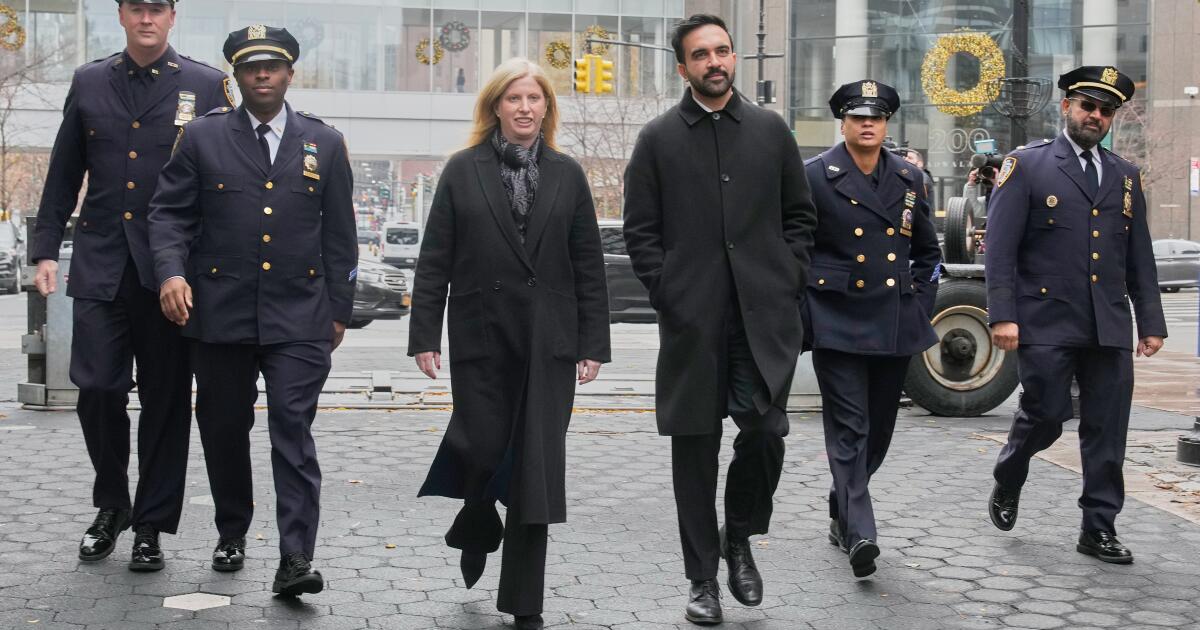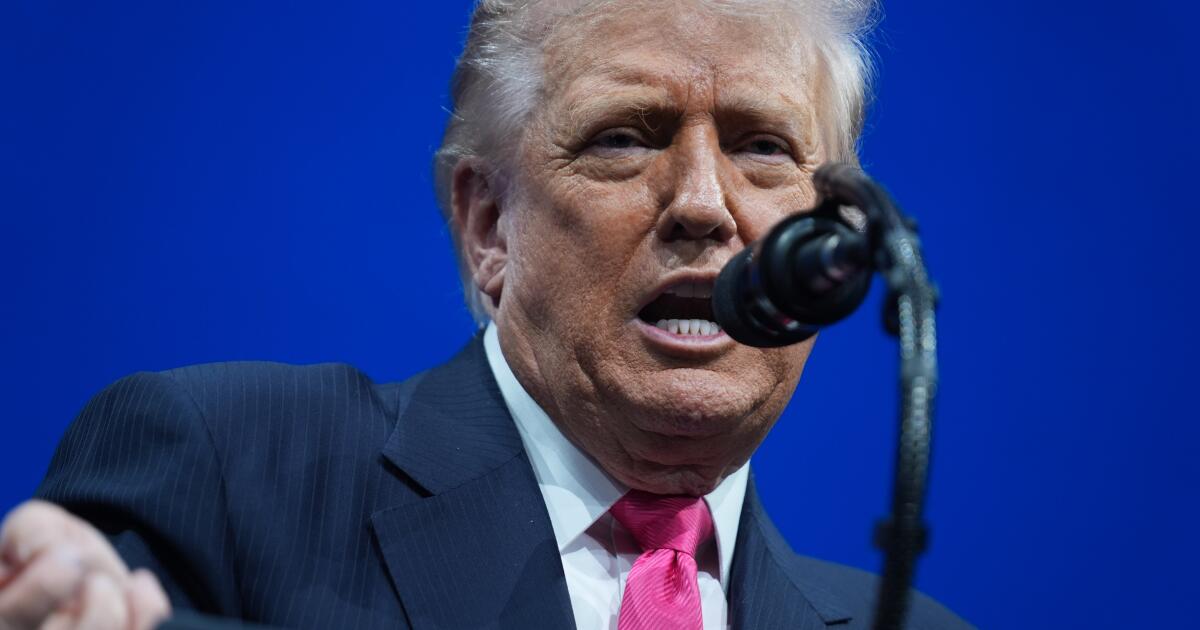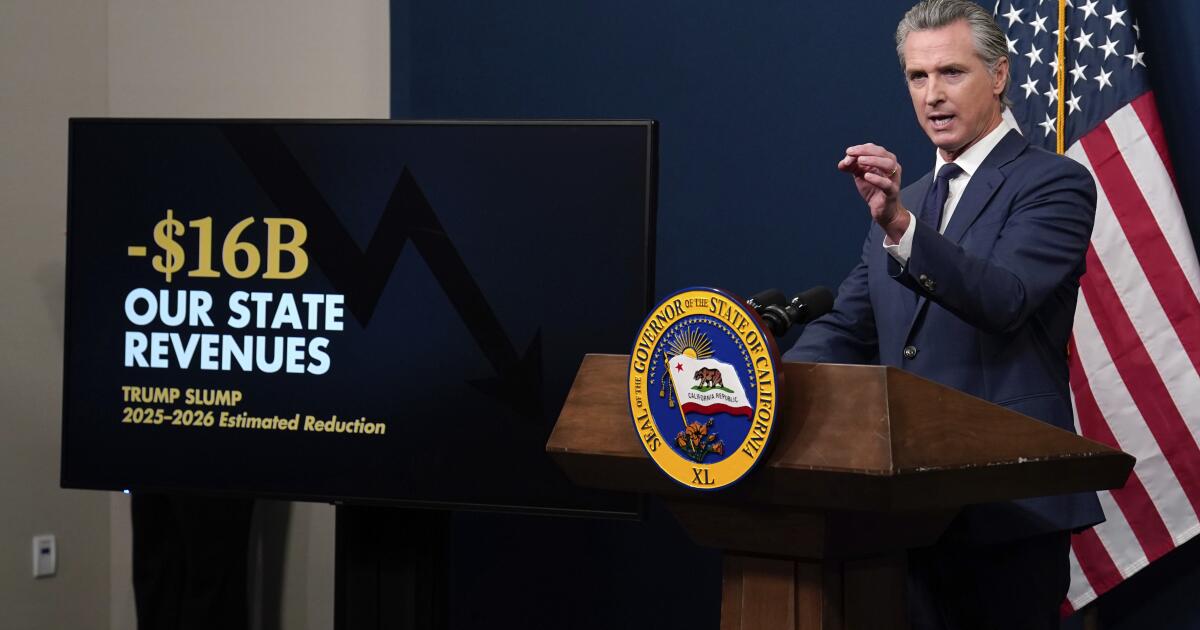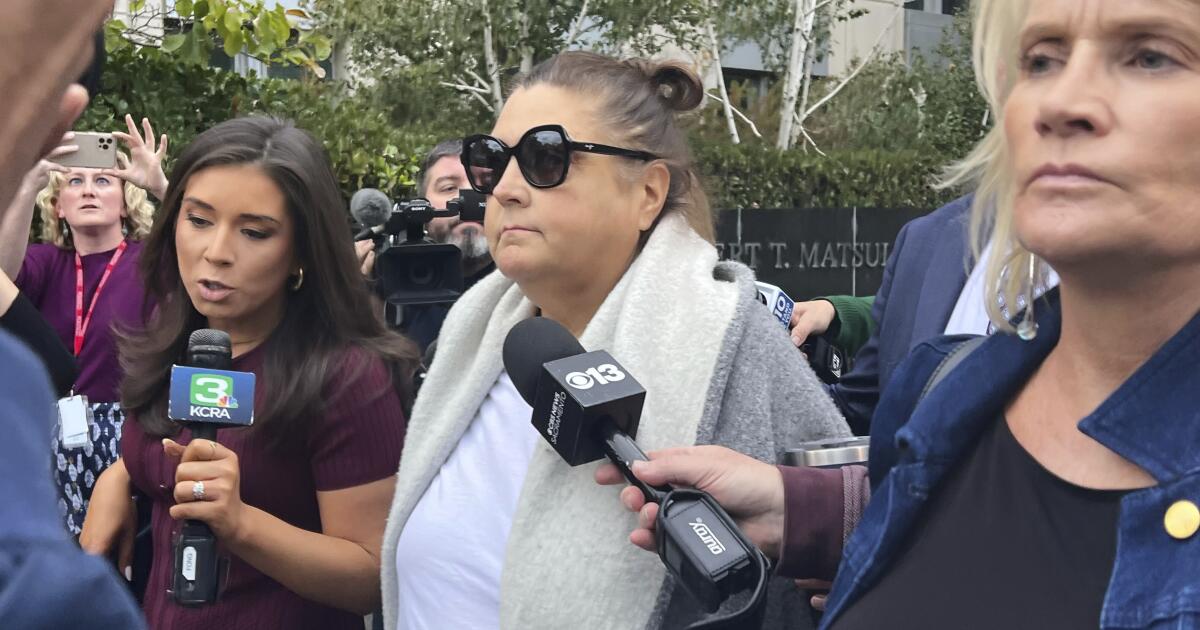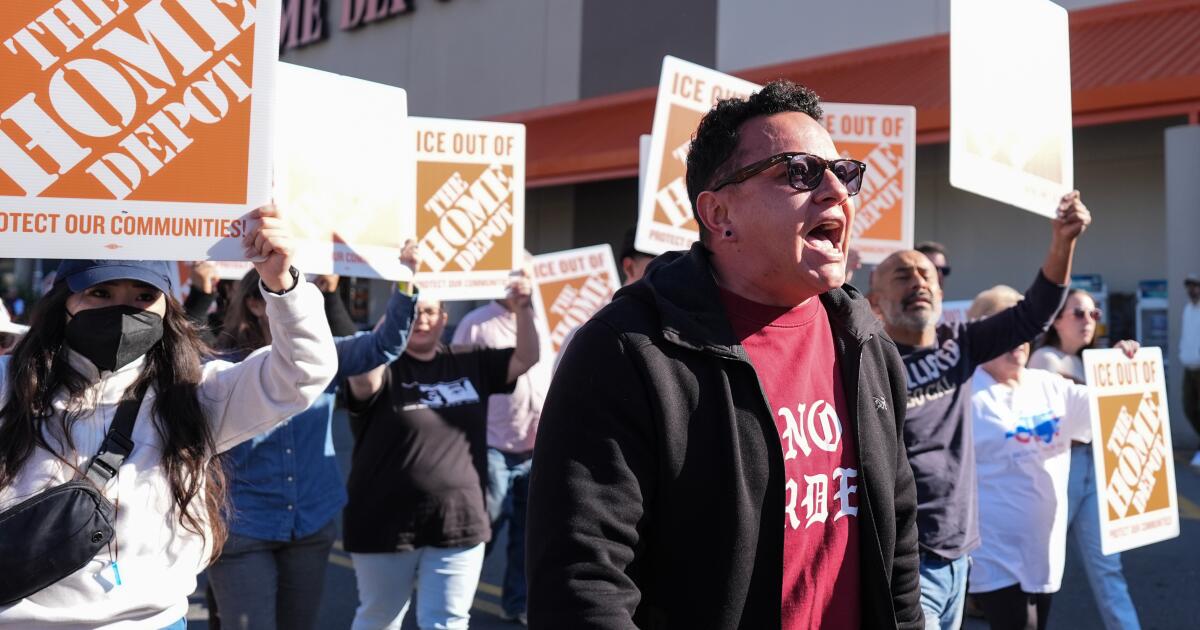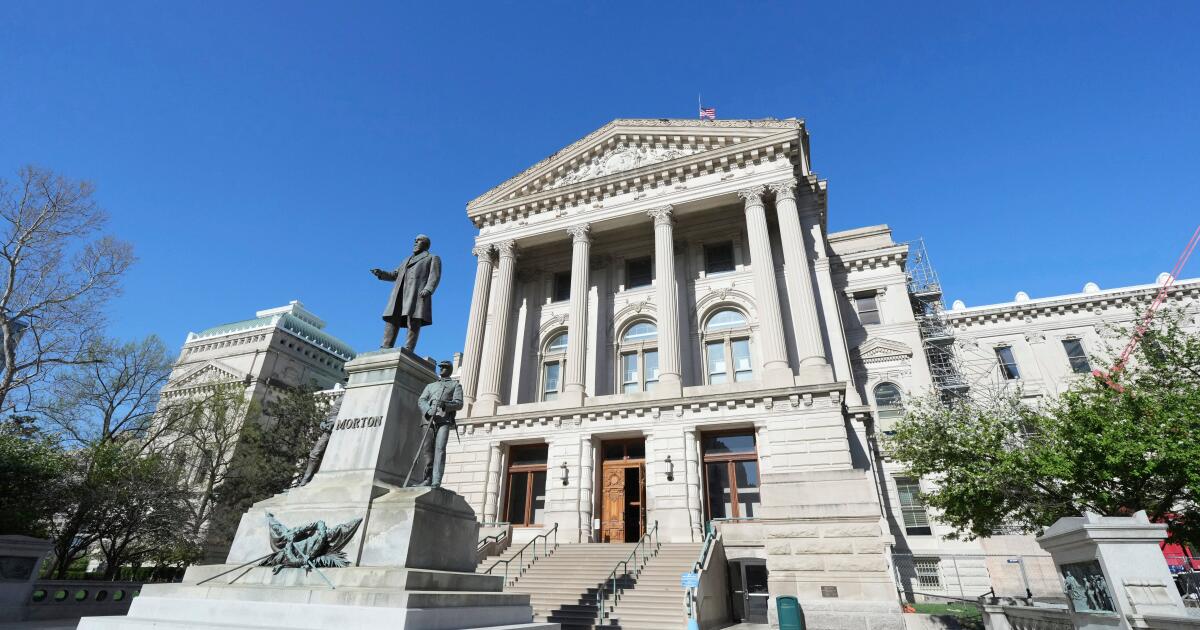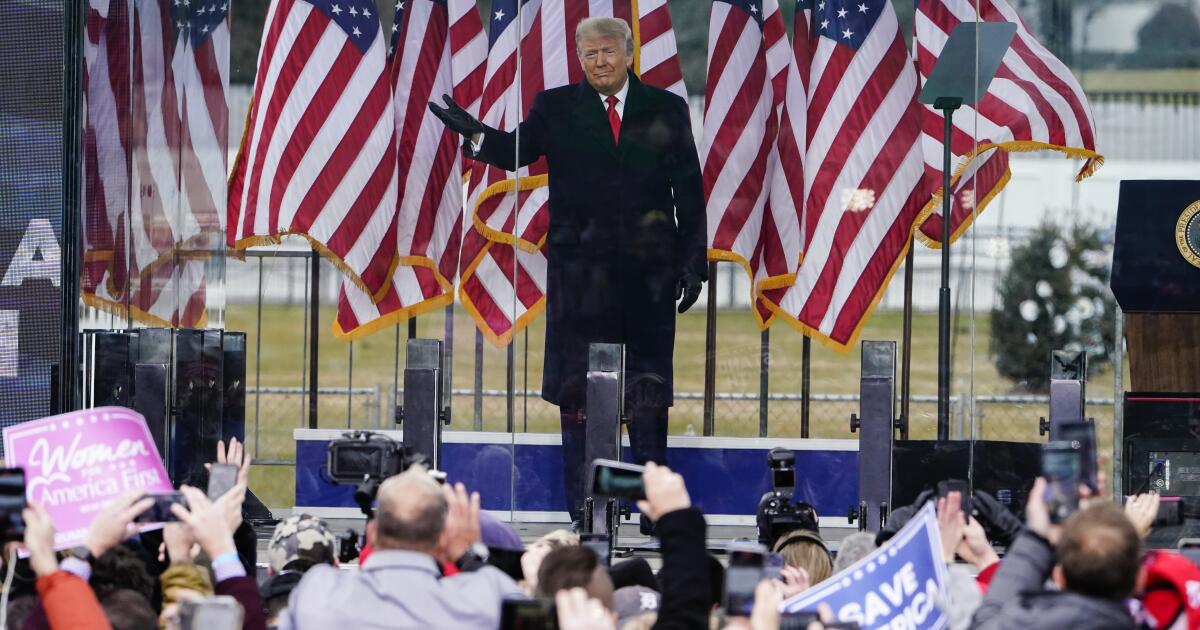Column: Instead of addressing injustice, pardons now pervert justice
It’s sheer coincidence that I’m writing here on the same subject as my Los Angeles Times colleague Jonah Goldberg’s most recent column: The crying need to amend the Constitution to do something about the much-abused presidential pardon power, the only unchecked power that a president has.
The fact that both Goldberg, a right-of-center commentator, and I, center-left, would near-simultaneously choose to vent on this topic — to call, in effect, for a national uprising against this presidential prerogative despite the evident difficulty of amending the Constitution — is telling: It’s a reflection of Americans’ across-the-spectrum disgust with how modern presidents have perverted it for personal and political benefit, usually on their way out the door. (Goldberg makes the case to get rid of the pardon power altogether. I would give Congress a veto, so presidents still can right actual wrongs of the justice system, as the founders intended.)
Yes, “both sides” are culpable. And yet, Goldberg and I agree, one president has surpassed all others in the shamelessness of his pardons: Donald Trump. In just 10 months he’s built a track record sorrier than that of his first term, which is saying something, and elevated clemency reform to an imperative.
We can’t stop Trump before he pardons again. Nor, probably, would an amendment campaign succeed before (if?) he leaves office in January 2029. But Americans of all political stripes can at least join in getting the process rolling, if only to protect against future presidents’ abuses.
From his first day in office, when Trump granted clemency to nearly 1,600 rioters who beat cops and stormed the Capitol to overturn his 2020 defeat, already 20 times this year he’s either pardoned or commuted the prison sentences of additional scores of undeserving hacks, fellow election deniers, war criminals, donors, investors in Trump businesses and career criminals who just happen to support him. (Recidivism among Trump’s beneficiaries is proving a problem; among the new charges: child sex abuse.)
The clemency actions have come so fast and furious that they hardly register as the scandals that they are, especially as the news about them vies for attention with the many other outrages of Trump’s presidency.
“No MAGA left behind,” Trump pardon attorney “Eagle Ed” Martin brazenly posted in May and again this month in announcing preemptory pardons for former Trump lawyer Rudy Giuliani and more than 75 other Republicans who were part of the fake-elector schemes to reverse Trump’s 2020 losses in battleground states, as well as other efforts after the 2020 election to keep him in power.
Those grants were followed last weekend by mercy for two more MAGA militants: Suzanne Kaye, a Florida woman sentenced to prison for threatening in video posts to “shoot their [expletive] a–” if FBI agents tried to question her about her involvement in the Jan. 6 insurrection, and Daniel Edwin Wilson of Kentucky, who was among those pardoned for his crimes on Jan. 6 but later sentenced by a Trump-appointed district judge on gun charges related to an illegal cache of weaponry that agents found at his home.
To Trump, absolving his supporters as victims of a supposedly weaponized justice system in effect absolves him as well, and furthers his false narrative — his big lie — that the 2020 election was stolen from him. As Martin, the White House pardon attorney, wrote in this month’s passel of pardons: “This proclamation ends a grave national injustice perpetrated upon the American people following the 2020 Presidential Election.” The opposite is true.
Lo, Trump’s mercy knows no bounds — of propriety, that is. The president won’t even rule out a pardon for convicted child-trafficker Ghislaine Maxwell, longtime procurer for, and participant with, Jeffrey Epstein in the sexploitation of young girls.
Even if Trump’s abuse of the pardon power isn’t unprecedented, its scale and shamelessness is. His Day One mass pardons for Jan. 6 participants set the tone. That action kept his 2024 campaign promise to “free the J-6 hostages,” but it broke an earlier, videotaped vow he’d made on Jan. 7, 2021, when anger at the Capitol attack was near-universal: “To those who broke the law, you will pay.” Hundreds did pay, convicted by juries and judges of both parties and sentenced to up to 22 years in prison. Until Trump got back in power.
Need evidence of how Trump’s pardons corrode the rule of law? Last December, weeks before he returned to the White House, yet another Jan. 6 participant, Philip Sean Grillo, was sentenced. The Reagan-appointed federal judge in the case, Royce Lamberth, admonished: “Nobody is being held hostage. … Every rioter is in the situation he or she is in because he or she broke the law, and for no other reason.” Grillo shouted back, as U.S. marshals led him off: “Trump’s gonna pardon me anyways.” He was right, of course.
Then there’s this: In September, after a Republican former Tennessee House speaker and his aide were sentenced in a fraud case, the government’s announcement quoted a senior FBI agent in Nashville calling the punishment “a wake-up call to other public officials who believe there are no consequences for betraying the public trust.” On Nov. 7, Trump pardoned both men.
Trump’s promiscuous use of his power has even spawned a niche business of Trump-connected lawyers peddling their influence to pardon-seekers willing to shell out tens of thousands of dollars to get out of jail not-so-free.
Consider the case of Changpeng Zhao, billionaire founder of the crypto exchange Binance, who served time in 2023 for facilitating money laundering, including for terrorist groups. Zhao didn’t just hire Trump-friendly lawyers. His company helped secure a $2-billion investment in the Trump family’s crypto startup. Last month, Trump pardoned Zhao. “I heard it was a Biden witch hunt,” he nonchalantly told CBS News’ “60 Minutes.”
Zhao’s success alone should be scandal enough to fuel a campaign to repeal or reform the pardon power. But there is so much more. And we surely haven’t seen the last.
Bluesky: @jackiecalmes
Threads: @jkcalmes
X: @jackiekcalmes

